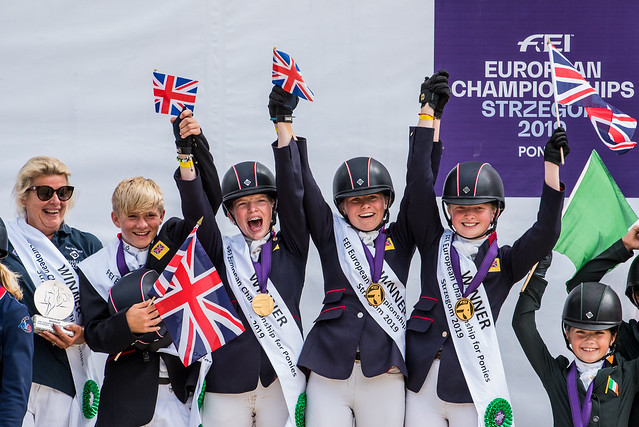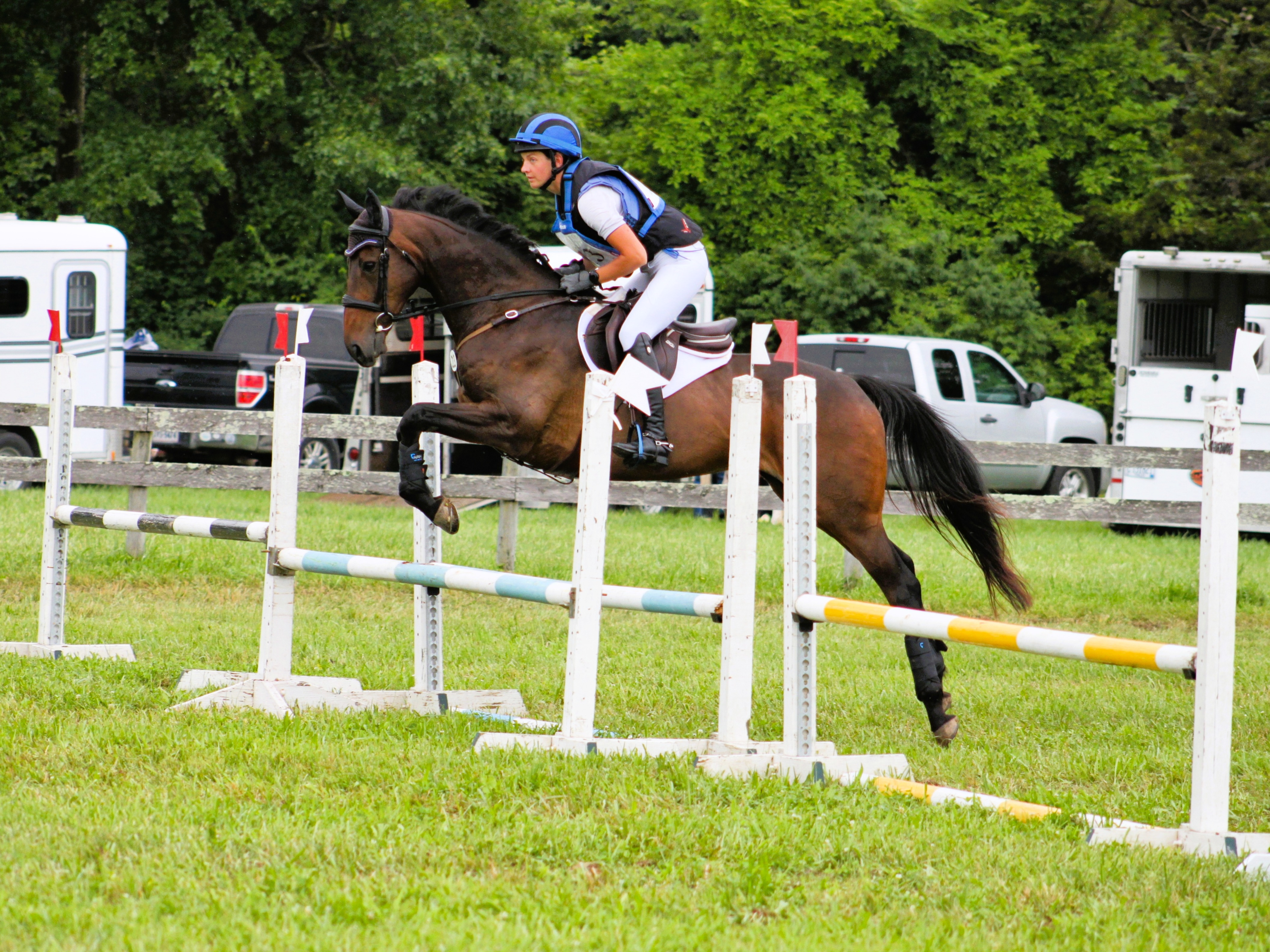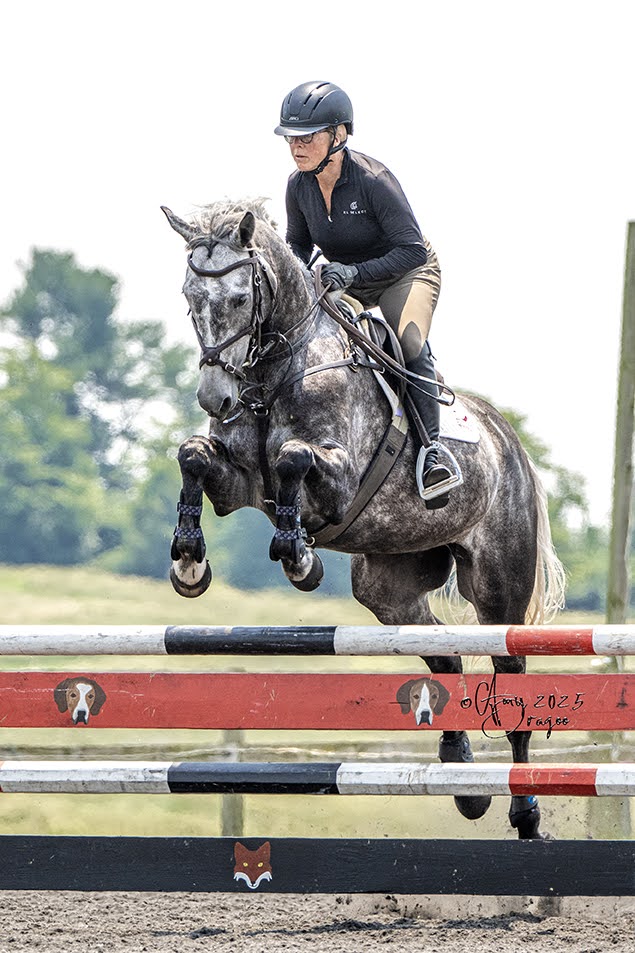
Tim Price and Ringwood Sky Boy en route to winning Burghley last year. Photo by Nico Morgan Media.
Somehow, we’ve managed to fast-forward through 2019 and find ourselves on the cusp of yet another Burghley. How? How, I ask you?!
Never mind – for all the end-of-season tidings it brings, we can’t help but feel like a kid hurtling towards Christmas when the biggest B rolls around again. And just to make sure we don’t forget about it in all the European Championships excitement, Burghley has released a first look at the course for this year’s running.
This is course designer Captain Mark Phillips’ fifteenth consecutive year working on the Burghley course, but he picked up plenty of experience prior to that, too – his first stint took place from 1989-1996, and his second from 1998-2000. A long history with the event certainly doesn’t mean he shies away from change, either. Last year, we saw him introduce an innovative flyover, which allowed the course to be run in a figure-of-eight, and introduced a new challenge for those riders who have ridden more Burghley courses than even they care to count.
Now, we’re getting an insightful look at the challenge that’s been set for this year’s field in a comprehensive course-walk video, featuring the Captain himself and jump jockey Bryony Frost.
“It’s completely different to what I’m used to,” says Bryony as the video opens. “It makes my job look easy – just going over a birch fence!”
We’re not sure about that, Bryony, but we’re glad to see that we’re not the only ones who piddle ourselves a little bit over the dimensionally enormous track that Burghley always delivers.

Yes, like this. Photo by Julia Shearwood Equestrian Photography.
“Some of them scare me as well,” admits the Captain with a chuckle.
So what can we expect from this year’s course?
“This year is big – in fact, it’s not just big, it’s very big,” he explains. Good start, then. But despite the emphasis on really getting the horses into the air, it’s important to remember that Burghley is always a course that focuses on positivity – it rewards positive riding, and it asks for it without any visual trickery or punishment for the horses, either. [Author’s note: I was unabashed in my praise of the Burghley course last year, which I thought was one of the best five-star courses I’d ever seen – and I wasn’t alone in my assessment. Click here to read my notes on what, exactly, Phillips did so right.]
The 2019 course follows the same route as last year’s, starting with a large counter-clockwise loop and then using the flyover to swap to a clockwise one. There’s 27 numbered fences, as opposed to last year’s 30 – that works out at 45 jumping efforts, if all the straight routes are taken, and around 60 if every long route is chosen instead. At 570mpm, we’re looking at an optimum time of between 11:15 and 11:20, though this will be set in stone closer to the event – last year’s optimum time, as a reference point, was 11:11.
“I think every course should have a beginning, a middle, where the real meat is, and an end – the beginning is to help them get warmed up, settle them, and really get them going,” explains Mark in the video. “The middle is where the questions are. And then there are two or three questions at the end to finish them off with a bit of a feel-good factor.”
Last year’s penultimate fence becomes 2019’s first fence, and it’s a Burghley classic – Lambert’s Sofa is a straightforward chair, jovially guarded by the larger-than-life figure of Lambert himself. For the uninitiated among you, it’s well worth familiarising yourself with the strange and rather sad story of Lambert who, at the time of his death, was the largest man in England. Formerly a gaoler, he steadily gained weight until he hit 52 stone, 11 pounds – or 739lb – and became a recluse. As he descended into abject poverty, he realised that he could profit from the very thing that had driven him into hiding in the first place, and he headed to London to put himself on show. Though he was a Leicester man, he remains part of Stamford lore for a rather grizzly reason – it was here that he died, while on a trip to the races. Raise a glass to him at Stamford’s famous George Hotel, where you’ll find his portrait in the front hall.

Daniel Lambert, as painted by Benjamin Marshall. Photo via Wikimedia Commons.
Anyway, moving swiftly on from Lambert, fences two and three on this year’s course certainly aren’t small – 1.20m tall, to be precise – but they’re straightforward, with forgiving profiles that encourage horses to really get themselves up in the air. Both fences will be the same as last year, but for some new decoration.
At the one-minute mark, we see the first real question on course, and just like last year, 4ABC takes us into the main arena. This year, the anniversary owl hole has been swapped for an upright wall, which will need to be jumped on an angle to manufacture the correct three-stride distance to the B element, a cascading fountain. Then it’s a further three strides to jump another angled wall.
Once again, Discovery Valley pops up at fence 5AB, which looks more forgiving this year – that big, beefy log we saw last year is followed up by a tall but straightforward brush fence, rather than a skinny B element.
The Captain makes up for it pretty quickly, though. Last year, fence 6 was a set of angled rails, which were considered a bit of a ‘gimme’ fence by everyone except poor Andreas Dibowski, who took a surprise tumble here. This year, they’ve been replaced by an incredibly skinny triple brush, which Mark recommends tackling at a slight angle to make it optically wider for the horse. This is the direct route, but there is an option here, which takes us over a slightly less intimidating triple brush and out over a brush upright on a curving line.

Randy Ward, Buck Davidson and Lillian Heard at the Leaf Pit in 2018. Photo by Chelsea Eldridge.
So far, so good? Welcome to the Leaf Pit, once again appearing at 7. Last year’s question included two skinny wooden arrowheads after that colossal drop, and we saw plenty of drive-bys through the day. This year, though, looks set to be the year the brush took over – once our competitors land from the bank (“a trot is fast enough [for the approach],” advises Mark), they’ll bowl on to a brush oxer followed by another skinny triple brush. And the striding?
“This is the one place you wouldn’t count,” explains Mark. “You don’t have a choice – you just have to go with whatever gravity gives you.”
There’s a lengthy alternative route here, but it looks time-consuming, and we’ll likely see most riders attempt to tackle the straight route – unless, of course, it starts causing problems.
The more things change, the more they stay the same, am I right? 8 takes us back to Discovery Valley again, but this year, we’re met by one of the widest log oxers we’ve ever laid eyes on. Four strides after clearing its six-foot top spread, there’s a beefy left-handed open corner – but, as Mark explains, the camber of the terrain will naturally direct the horses to the right spot. Or, of course, they could take the option, which will see them snake over logs and ditches.
The next big questions pops up at fence 10 and 11, the Trout Hatchery. Anyone remember last year’s jam-packed question? Allow us to refresh your memory – the first three fences saw horses jump in over a skinny cottage, pop a triple brush in the water, and then drop into the second section of the pond over a hanging log. Then they popped up a little bank – 12A – and turned tight into another triple brush. Phew. This year, the first fence is an airy timber oxer, which will see competitors take off and land on dry ground – but set on a downhill slope and with the water coming up fast, it’ll take some seriously positive riding. Then, there’s another of its ilk in the water, and because of the drag of the water, it could be quite hard to get enough momentum – so for those who think they’ll have problems, there’s an alternative route on dry land. Then, it’s a hanging log back into the water, just like last year, and then back up that step – but once again, the triple brush into the top pond has been replaced by some airy timber.

Ciaran Glynn and November Night tackle the Joules at the Maltings complex in 2018. Photo by Peter Nixon.
Joules at the Maltings at 13ABCD is the next serious question once again, and as usual, it begins with an absolutely colossal maximum dimension white oxer. Then, there’s a left-handed turn to another oxer, before a fiendishly tricky turn to a huge open corner. There’s a circuitous long route here, but it’ll add ten to fifteen seconds on the clock – so anyone who’s hunting for a win will go straight. Good luck to ’em.
The sea of finished timber at the Rolex Combinations (14ABCD) poses much the same question as last year, with one big difference – the oxers of the first and third elements have been replaced by open corners. But the skinny, airy, Vicarage Vee-style rail and ditch of the second element stays the same.
With the Rolex Combinations behind them, our competitors hit the six-minute marker, and here, Mark says, “it’s not over – but things start to get a bit easier.”
If you say so, Mark. It’s time to head over the flyover, with its new jump on top, and then onto Land Rover at the Lake at 16AB, which looks largely unchanged from last year – once again, it’s just two angled uprights with a variable stride pattern that depends on the line taken. A long pull up Winners’ Avenue follows, once again with a big, square ‘breather’ fence to break up the scenery, and then we’re into classic Burghley territory.

A note to course designers everywhere – if your feature fence hasn’t been made into a meme, it’s not terrifying enough. Photo via Libby Head.
The Cottesmore Leap at 18 is one of the world’s most infamous rider frighteners, but despite looking truly, wildly horrifying, it never tends to causes any issues. Standing at 3m wide and 4’9 high, though, it definitely takes a positive ride. Oh Captain, my Captain, why are you smirking?
The Keepers Brushes at 19ABCD, too, are much the same, with imposing hedges on curving lines and an option up for grabs, too – but the true difficulty here is in thinking ahead. The decision about which route to take will have to be made the second our competitors land from the biggest ditch-and-hedge in the world – so closing one’s eyes and kicking like stink simply isn’t an option.

Harry Meade and Away Cruising jump the egg boxes at Clarence Court, the final combination on Burghley’s 2018 course. Photo by Peter Nixon.
Clarence Court (20ABCDE) was the one combination on course that Mark wasn’t happy with last year, and he vowed to change it before 2019 – and he has done. Last year, it featured two wide egg boxes on a curving right-handed line, down to a skinny final element. This year, it’s an uphill approach to a coop, followed by three strides back down to the first eggbox. Then it’s a left-handed turn of nearly 90 degrees to the second eggbox. The alternative route, set for horses who are lacking some momentum, features an upright gate, a coop, two steps down, and another coop, which should allow them to regain some of that ‘go’.

Richard Jones and Alfies Clover at the Collyweston Slate Mine. Photo by Peter Nixon.
The last big fence, as Mark puts it, appears at 22, the Collyweston Slate Mine. A mainstay of the Burghley course, this enormous spread is visually imposing but effectively acts as a let-up fence. At the Anniversary Splash at 23AB, there are decisions to be made – do you go left-handed over the first upright brush fence, which walks as five long strides and requires a very forward ride to the second brush into the water, or do they go right-handed and take a second or two longer to ride an easy seven? It’s the last decision they’ll have to make – from here on out it’s just about trying to avoid a miss over the last handful of single fences.
The consensus? It’s a track that doesn’t differ hugely from last year’s excellent effort, which is a phenomenon we see quite often. But this can work in one of two ways – either those repeat visitors will have its questions largely sussed before they leave the start box, or they’ll think they do, and be lulled into a false complacency as a result. One thing’s absolutely certain: as always, Burghley will be the ultimate test of stamina, boldness, and forward riding – and we can’t wait.
#LRBHT19: Website, Entries, Live Scoring, Live Stream, EN’s Coverage, EN’s Twitter, EN’s Instagram




































































